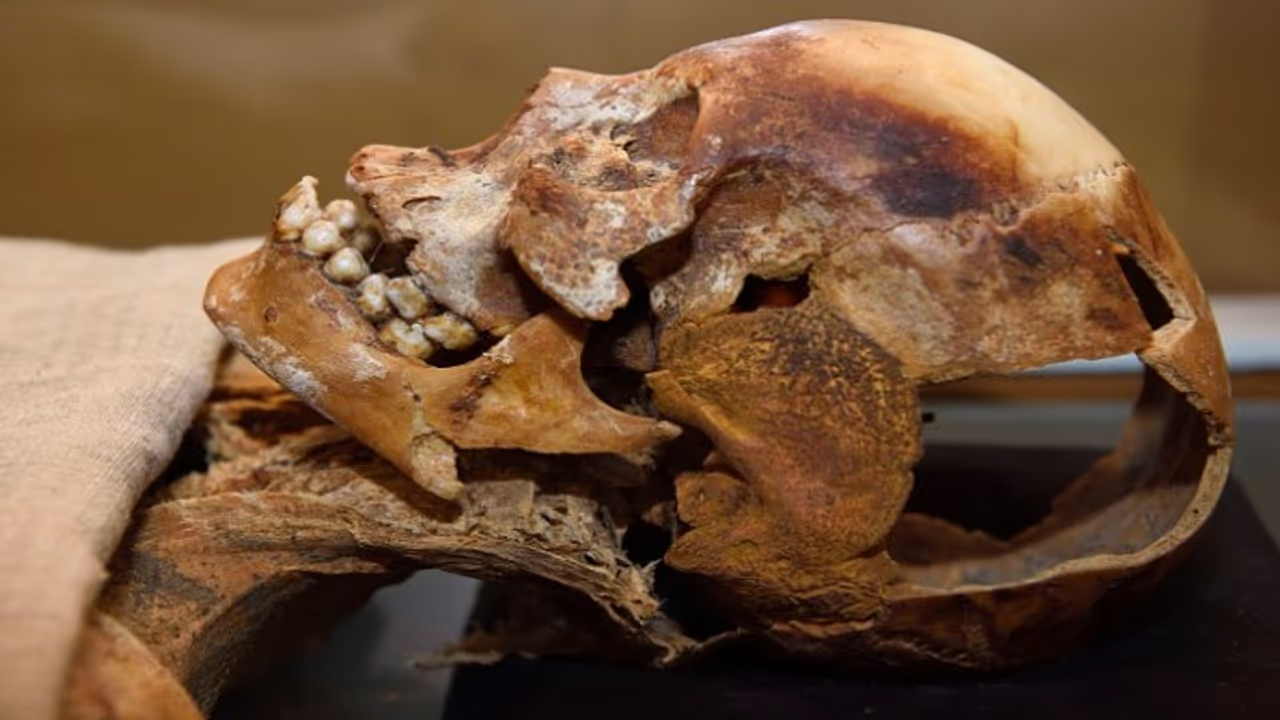A groundbreaking discovery in China has unveiled a new human species, Homo juluensis, with remarkable physical traits, that vanished nearly 200,000 years ago.
A groundbreaking discovery in China has unveiled a new human species, Homo juluensis, with remarkable physical traits, that vanished nearly 200,000 years ago. The astonishing find comes from fossilized remains of 16 individuals, showcasing large heads, broad skulls, and massive teeth that surpassed the size of both Neanderthals and Homo sapiens.

The remains were accompanied by thousands of artifacts, including intricately crafted stone tools and animal bones, offering glimpses into their hunter-gatherer lifestyle. The study revealed that these early humans lived in small groups, hunting wild horses and utilizing their entire bodies for sustenance and survival. They even fashioned clothing from animal hides to endure harsh glacial climates.
The rise and fall of Homo juluensis
Homo juluensis, living during an era marked by dramatic climate shifts and glacial periods, faced brutal environmental challenges. According to the researchers, their small population size made them especially vulnerable to extreme weather events.
“This is part of the reason why the population density of Homo juluensis is probably never as big as when modern humans moved out of Africa in larger numbers,” shared Christopher Bae, co-author of the study, in an interview with the South China Morning Post. “They genetically swamped the indigenous populations like neanderthalensis and juluensis.”
“The eastern Asian record is prompting us to recognize just how complex human evolution is more generally and really forcing us to revise and rethink our interpretations of various evolutionary models to better match the growing fossil record,” Bae noted.
The skulls of Homo juluensis measured an astounding 103 to 109 cubic inches—significantly larger than Neanderthals (88 cubic inches) and modern humans (82 cubic inches). Despite this, Bae cautioned that cranial size alone does not equate to higher intelligence.
Comparative studies revealed intriguing similarities between Homo juluensis and the Denisovans, an ancient human population known from a few bone fragments discovered in Siberia in 2008. Large molars—distinctive to both groups—were a key similarity. “One of the things that always stood out about the Denisova molars was that they were quite large. The molars from Xujiayao from our type specimen are also quite large,” Bae explained.
Interestingly, researchers argued that Denisovans might not represent a separate species but rather a general population that likely belongs to Homo juluensis.
The study, published in Nature, posits that Homo juluensis emerged through genetic intermingling with Homo sapiens during their migrations across Late Quaternary landscapes. This era, marked by recurring glacial periods, saw a dramatic reshaping of ecosystems, ultimately driving the extinction of ancient human species.
“Recent research initiatives in China, and broader eastern Asia, are showing clearly that multiple hominin lineages were present during the Late Quaternary,” the study stated.
